January 23rd. Around noon. I’m checking the Brill website to see if it is out, and yes, it is out! The results of our experiment are now available to be freely downloadable! It is very exciting!
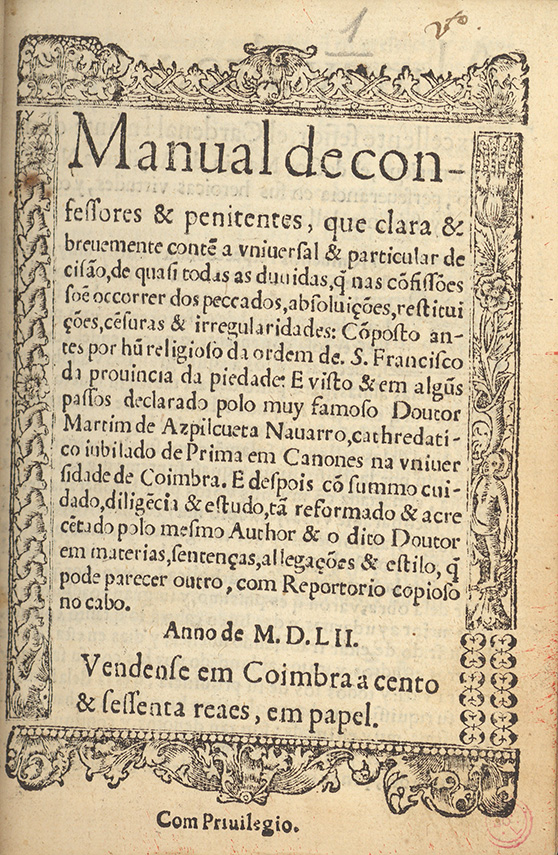
The volume, The Production of Knowledge of Normativity in the Age of the Printing Press. Martín de Azpilcueta’s Manual de Confessores from a Global Perspective, is in fact the outcome of an experiment. The experiment originated from two premises: the awareness of a strong (although not exclusive) connection, in history, between law and the written page; and the idea that knowledge is, today, much like it was in the past, also the product of different material and social processes of production. The aim of the experiment was to reach a better understanding about how knowledge of normativity was produced in the early modern period, a time of the first globalisation and of the media revolution that accompanied the emergence of the printing press. For a deeper understanding of this phenomenon, it was not sufficient to look at legal texts as intellectual outputs of the so-called “author”. It was also necessary to look at books as material objects: objects in which knowledge was embedded, stored, and mobilised on a global scale; objects, the production, circulation, and consumption of which – according to Robert Darnton’s “communication circuit” – contributed to the production of knowledge itself[1].
To explore this, the interaction and dialogue between at least two disciplines was required: book history and legal history. With this purpose in mind, I put together an amazing team of experts from the two fields who shared the task of analysing – using different perspectives, methods, tools, sources, and research questions – the object on our lab table, which was an early modern normative global bestseller: Martín de Azpilcueta’s Manual de Confessores. Looking at Azpilcueta’s Manual as a material object meant considering all three pillars of Darnton’s “communication circuit” on the early modern global scale. Thus, the members of the team were chosen according to their expertise on different geographic areas, enabling us to cover as much as possible of the four parts of the early modern world (the Americas, Africa, Europe and Asia).
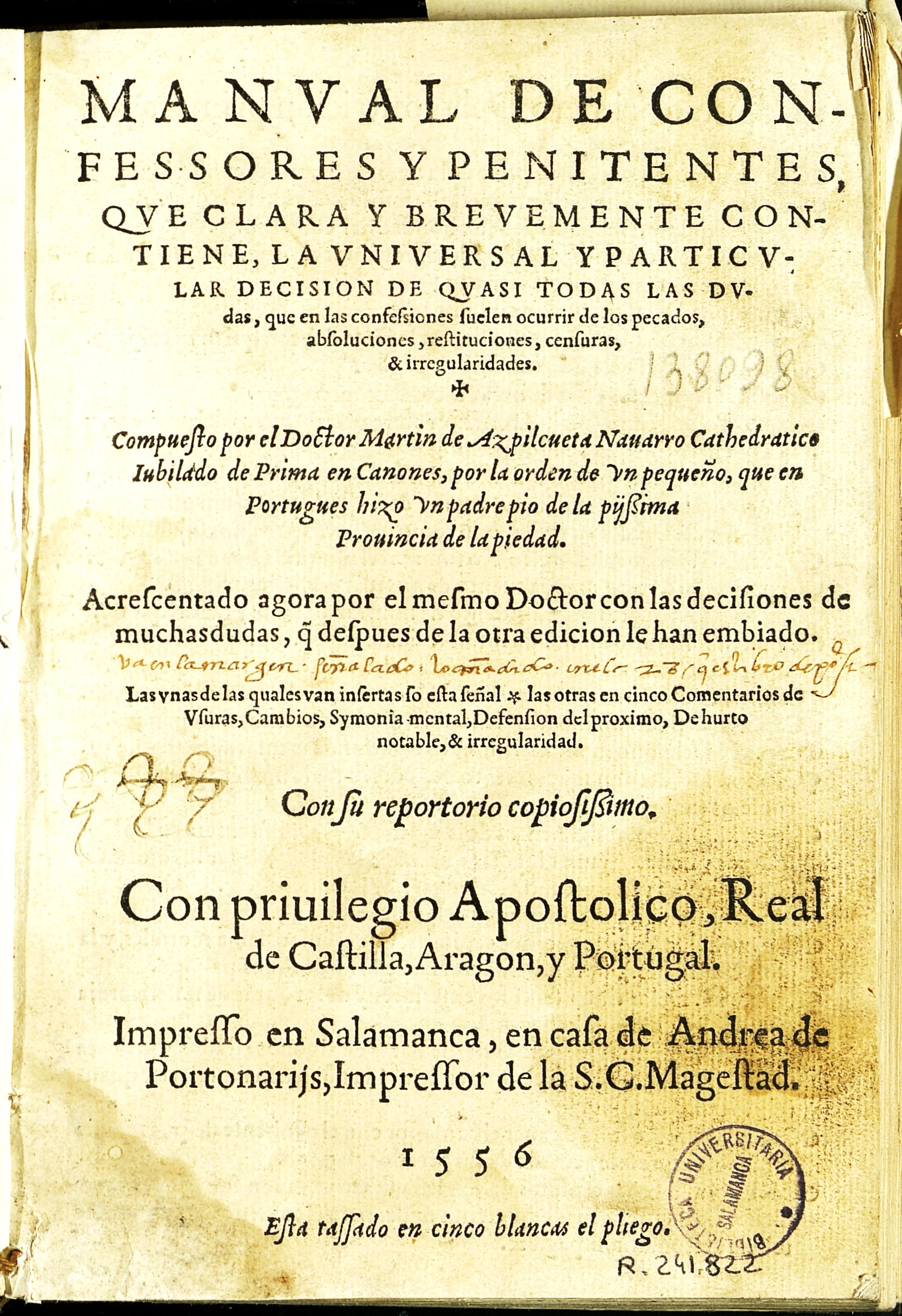
The Max Planck Institute for Legal History and Legal Theory is the context in which the idea of this collective volume was conceived and the experiment put into practice. It is thanks to the stimulating teamwork at the Institute, the seminars and workshops, and, most of all, the always inspiring discussions with Thomas Duve and colleagues in Frankfurt, that the idea to make Azpilcueta’s Manual the object of cross-observation by legal historians and book historians, and to look at it from a global perspective, came to fruition.
But the book is first and foremost the outcome of a dialogue among the authors, who formed a very productive working group. Everyone agreed to look at Azpilcueta’s Manual as a material object, with their own categories, methodologies and sources. I made a database available to the authors which contained the metadata and digital reproduction of all the editions of the Manual and derivative products that I had compiled over the last few years. Along with this date, I could not help but share my passion for this incredible story as well. All the members of the group accepted the challenge and the experiment could start! Although it was a complicated moment in time (during the COVID-19 pandemic), that did not stop us, even though working with an international team of scholars based all over the world forced us into long online meetings which were, unavoidably, too early for the members of the team based in the West and too late for those living in the East. We all met together three times, always virtually, to share methods, questions, and bibliographies, and exchange provisional versions of our chapters, which gave consistency to the volume. In other words, it was a heroic enterprise!
Thanks to the results of this experiment, we can follow different actors, places, and factors that contributed towards shaping the early modern knowledge of normativity. First, in addition to discussing the author’s agency in the publishing industry, the book shows different communities of actors with different relationships to the printed page. These communities were made up of the first readers of the Manual, who were asked by Azpilcueta to provide questions and who participated in the transformation process of the book; missionaries who consulted Azpilcueta from the mission and whose letters were used as a means to produce and disseminate knowledge of normativity; and missionaries who possessed copies of the Manual or of the Compendia and put these into practice in the missionary territories both in the Western and Eastern parts of the Early Modern Empires, sometimes adapting Azpilcueta’s erudite knowledge to the local needs of their missions in the printed and handwritten texts and confessional manuals that they authored. Authors of the several Compendia of the Manual, who transformed and adapted the text for different readerships, are also present. Moreover, new light is shed on all those actors involved in the production and circulation of the book as a material object: institutional and political powers granting licences and printing privileges, as well as printers, publishers, booksellers, agents, and shippers. Last but not least, owners and readers of Azpilcueta appear: missionaries (Jesuits in particular), clerics, legal professionals, governors, and physicians, as well as confessors and priests – who had to acquire the knowledge they needed to perform confession according to the norms of the Council of Trent – and friars who read the books that belonged to the collections of institutional libraries – such as the Franciscan monasteries in New Spain – and who sometimes left traces on the printed page (manicules, for instance) of their reading practice.
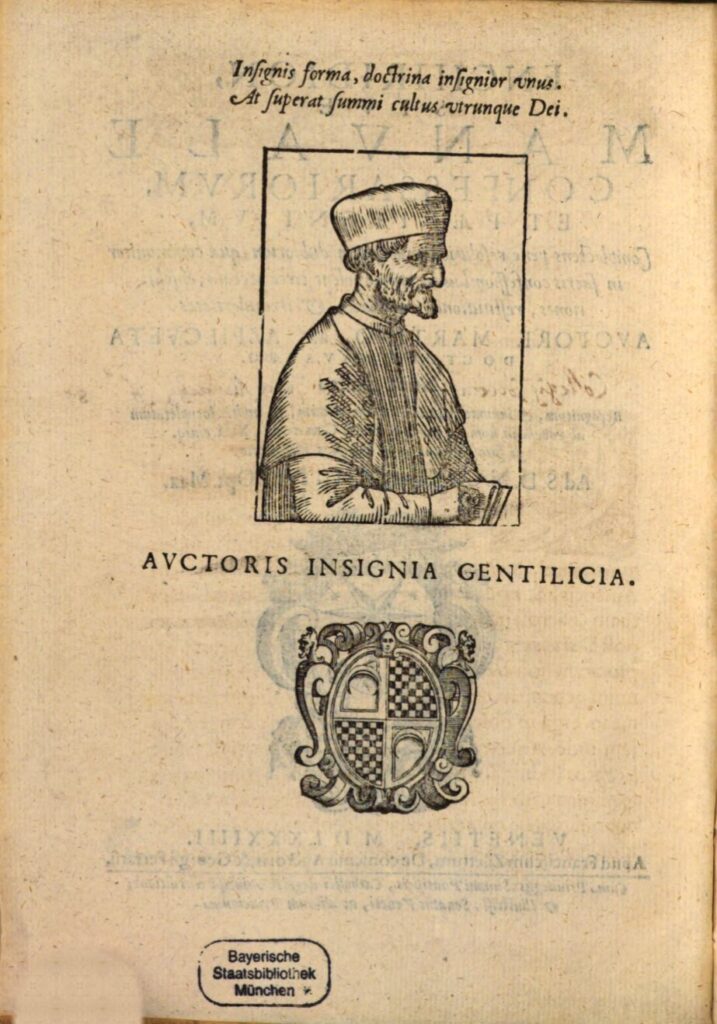
Furthermore, the authors show that the distribution, circulation, and presence of the Manual on a global scale is also a fundamental component of the production of knowledge of normativity. Some of the chapters portray the actual presence of the book in a certain geographic area, shedding light on the time span in which the book was requested, shipped, sold, present on the bookshelves of private and institutional libraries, and possessed by readers. Commercial and religious channels brought different editions of Azpilcueta’s Manual and Compendia to the Americas and Asia: we find copies of it in the book market; on the ships that brought books and other goods from Seville to New Spain and Tierra Firme, between the 16th century and the first half of the 17th century; in conventual and private libraries in New Spain, Brazil (here, clearly losing its importance and being replaced by other titles by the 18th century), and Asia.
Finally, together with the never-ending revision and transformation processes performed by an “authority” like Azpilcueta (and, later, by both Franciscans and Jesuits), which made the book suit different contexts and readers, the need to spread the norms of the Council of Trent was among several factors that explain the extraordinary diffusion and presence of Azpilcueta’s Manual on a global scale. These factors, which contributed to explicating the demand for the book in the Atlantic book trade, intertwined with others, such as the economic interest of the actors involved in the book production and trade – printers, publishers, booksellers – who saw in the Manual as an exceptional business opportunity.
Now the book is out. I’m very curious to see if it will produce any effect. It would be especially interesting to see if other branches of knowledge will try to set up interdisciplinary experiments of this kind, maybe putting another book, or another object, on the lab table. Let’s see. My feeling is that sharing methods, backgrounds and specific takes related to a certain field of research, can open up new research perspectives.
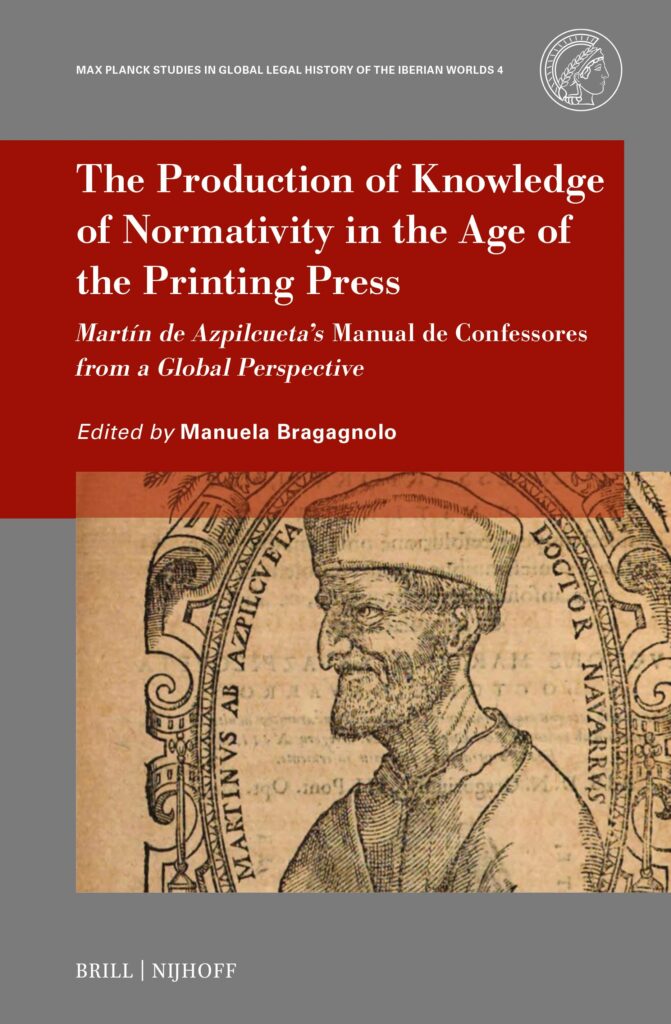
Table of Contents
Books and the Production of Knowledge of Normativity in the Early Modern Period. The Case of Martín de Azpilcueta’s Manual de Confessores –Manuela Bragagnolo
Part 1: Book Production and the Production of Knowledge of Normativity
Legal Authorship in the Age of the Printing Press. Manual de Confessores by Martín de Azpilcueta (1492–1586) – Manuela Bragagnolo
The Flemish Reeditions of Martín de Azpilcueta’s Works: A Paratextual Study – César Manrique Figueroa
Professional Book Trade Networks and Azpilcueta’s Manual in 16th-Century Europe – Natalia Maillard Álvarez
Translating Normative Knowledge: Martín de Azpilcueta and Jesuits in Portuguese America (16th Century) – Samuel Barbosa
Sed talentum commissum non abscondere: Moral Obligations of an Author – Christiane Birr
Part 2: Circulation and Presence of Azpilcueta’s Manual on the Globe
Martín de Azpilcueta Navarro in the Andes (16th–17th Centuries) – Pedro Guibovich Pérez
Azpilcueta in the Atlantic Book Trade of the Early Modern Period (1583–1700) – Pedro Rueda Ramírez
The Path of Doctor Navarro in Colonial Mexico: The Circulation of Martín Azpilcueta’s Works – Idalia García Aguilar
The Presence of Azpilcueta’s Manual de Confessores in Portuguese America (16th to 18th Centuries) – Airton Ribeiro
Part 3: Production, Circulation, and Use of Azpilcueta’s Manual across the Globe
Reading Azpilcueta in the Valley of Mexico – Byron Ellsworth Hamann
Doctor Navarro in the Americas: The Circulation and Use of Martín de Azpilcueta’s Work in Early-Modern Mexico – David Rex Galindo
Martín de Azpilcueta on Trade and Slavery in Jesuit Legal Manuscripts from Iberian Asia – Stuart M. McManus
Pietro Alagona’s Compendium Manualis Navarri Published by the Jesuit Mission Press in Early Modern Japan – Yoshimi Orii
Making Women Sinners: Guilt and Repentance of Converted Japanese Women in the Application of Alagona’s Compendium manualis Navarri in Japan (16th Century) – Luisa Stella de Oliveira Coutinho Silva
[1] Darnton, Robert, “What is the history of books? revisited”, in Modern Intellectual History 4:3 (2007), 495–508; Darnton, Robert, “What is the history of books”, in Daedalus 111:3 (1982), 65–83.
Cite as: Bragagnolo, Manuela: How was Knowledge of Normativity Produced in the Early Modern Period? A Book on the Lab Table. Coordinates of an Experiment, legalhistoryinsights.com, 14.02.2024, https://doi.org/10.17176/20240229-113018-0

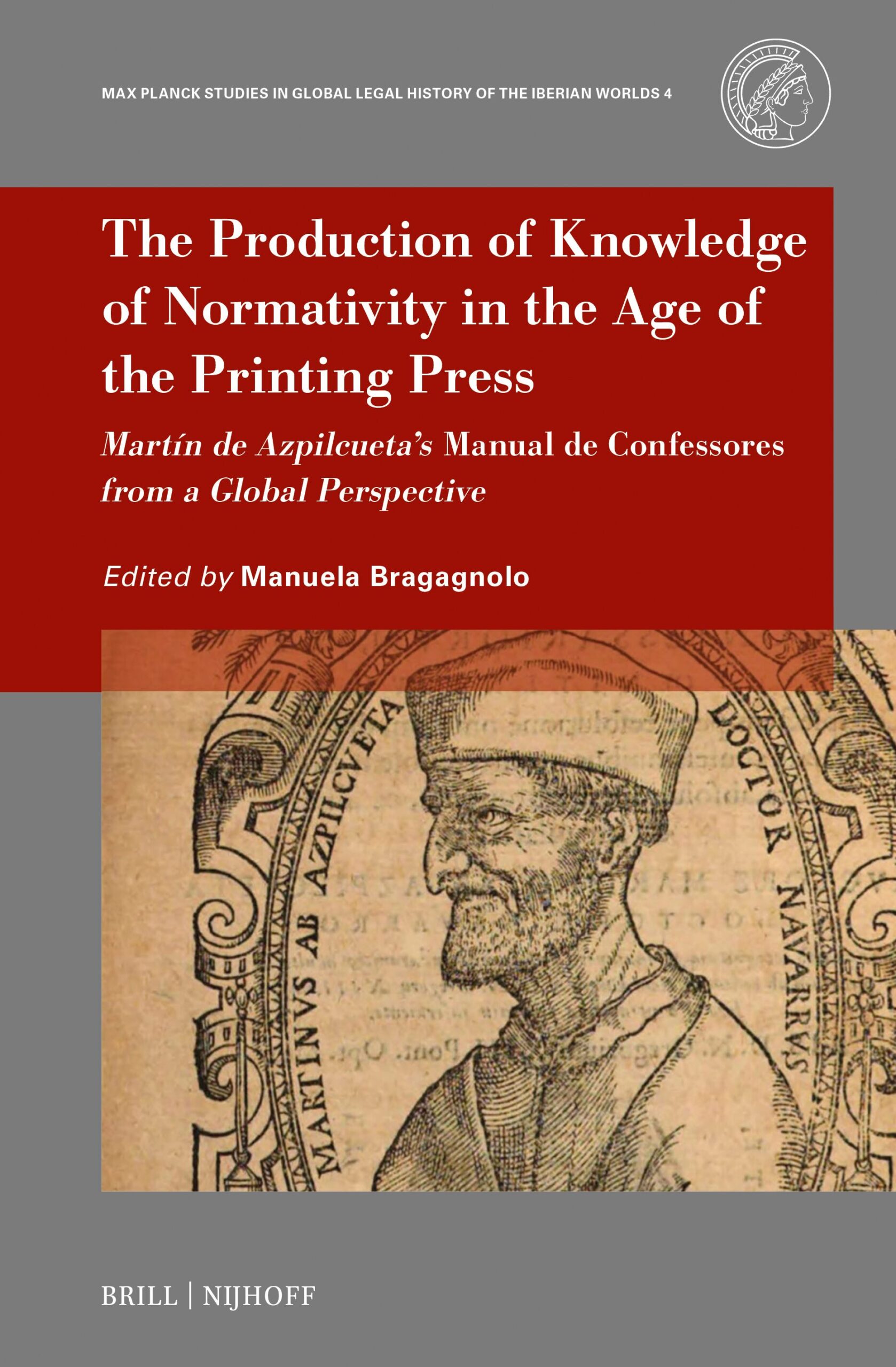

 This work is licensed under a
This work is licensed under a 